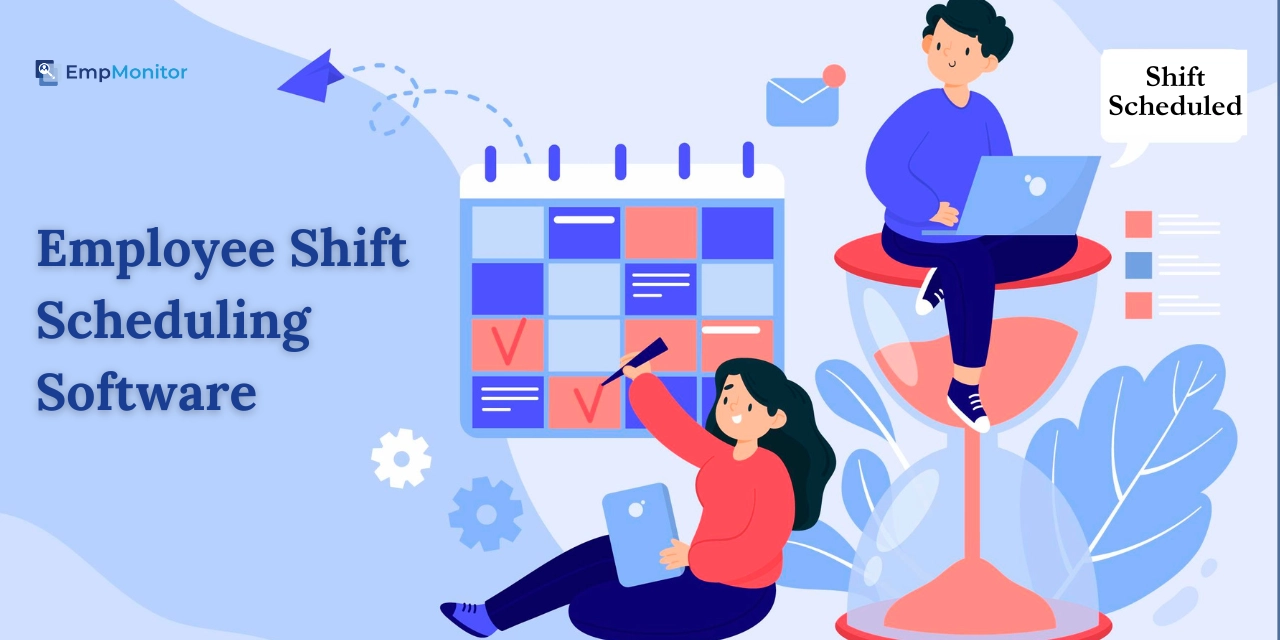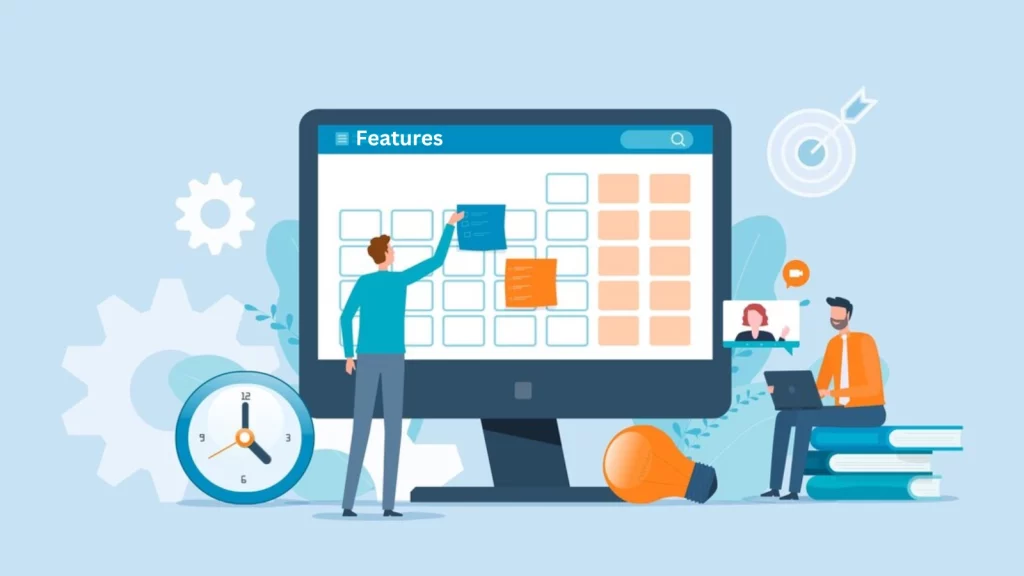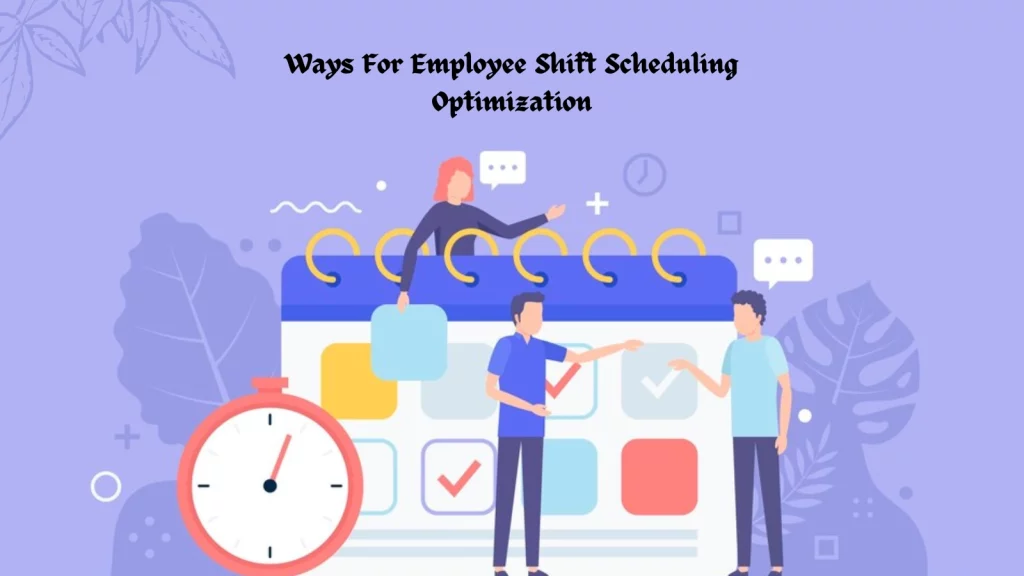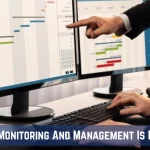Are you tired of the headache that comes with organizing employee schedules manually? Well, fret no more! Employee shift scheduling software is here to rescue you from the chaos. This innovative tool is designed to make scheduling a breeze for businesses of all shapes and sizes.
Forget about the days of wrestling with spreadsheets and drowning in emails just to get shifts sorted out. With employee shift scheduling software, you can say goodbye to the hassle and hello to efficiency. This software simplifies the process of assigning shifts, tracking availability, and ensuring your business has the coverage it needs.
In this blog, we’ll explore the wonders of shift scheduling software, uncover its key features, and discuss how it can transform the way you manage your workforce. So, let’s dive in and discover how employee shift scheduling tools can simplify your work life.
Listen To The Podcast Now!
What Is Employee Shift Scheduling Software?
Employee shift scheduling software provides a specialized digital solution crafted to automate and enhance the process of creating work schedules for employees in any organization.
This digital tool acts as a centralized platform, simplifying the intricate task of managing shifts for supervisors and managers alike. Its core functions encompass the precise creation, efficient management, and dynamic adaptability of work schedules to meet the evolving needs of the workforce scheduling software.
By leveraging this software, organizations can streamline their scheduling processes, minimize errors, and ensure optimal coverage for all shifts. Additionally, it facilitates seamless communication between managers and employees, allowing for swift adjustments, time-off requests, and shift swaps to take place with ease.
Employee shift scheduling software empowers organizations to maximize productivity, enhance employee satisfaction, and foster a more efficient work environment.
Why Use Employee Shift Scheduling Software?
The utilization of the employee shift scheduling tool is instrumental in modern workforce management for several compelling reasons.
Employee Retention
The software enhances job satisfaction, and as a result, it improves employee retention by offering transparent communication, flexibility, and self-service options. A positive and well-managed scheduling experience is a core factor in cultivating a motivated and loyal workforce.
Efficiency and Precision
Automation streamlines the scheduling process, minimizing the time and effort required to create and manage shifts. Algorithms consider diverse factors such as employee availability, skills, and preferences, resulting in optimized and error-free schedules.
Real-Time Adaptability
The employee shift scheduling software allows for immediate schedule adjustments in response to unforeseen changes, ensuring that workforce allocation remains aligned with dynamic business requirements. Real-time updates keep managers and employees informed, fostering a responsive and agile work environment.
Employee Empowerment
Self-service features empower employees by providing visibility into their schedules, allowing them to request time off, swap shifts, and manage their work-life balance. Increased autonomy and flexibility contribute to higher job satisfaction and a positive workplace culture.
Strategic Decision-Making
Analytics and reporting tools provide valuable data on workforce trends, enabling informed decision-making for long-term strategic planning. Organizations can align their staffing strategies with business goals and anticipate future workforce needs.
Features Of Employee Shift Scheduling Software
Core features of the Employee Shift Scheduling tool typically include the following features and functions.
Automated Scheduling
The software automates the process of creating employee schedules, taking into account factors such as work hours, skills, and availability.
Real-time Updates
Allows real-time adjustments to schedules to respond to unforeseen changes or employee requests.
Communication Tools
Facilitates seamless communication between management and staff regarding schedules, shift changes, or other relevant updates.
Compliance Management
Helps ensure compliance with labor laws and regulations, minimizing the risk of legal issues related to scheduling practices.
Time and Attendance Tracking
Often includes features for tracking employee attendance, hours worked, and managing overtime.
Employee Self-Service
Allows employees to view their schedules, request time off, and swap shifts, providing a degree of autonomy and flexibility.
Reporting and Analytics
Provides data and analytics on workforce trends, helping management make informed decisions and optimize scheduling efficiency.
Best Employee Shift Scheduling Software
For managers trying to build a shift schedule of Employees or even thinking of streamlining their shift scheduling process, EmpMonitor emerges as the best cutting-edge solution.
EmpMonitor
EmpMonitor, a comprehensive workforce management software, includes robust shift scheduling software designed to enhance efficiency and organization in managing employee schedules. Here’s an overview of EmpMonitor’s features in its shift scheduling module:
User-Friendly Interface:
EmpMonitor offers an intuitive and user-friendly interface for easy navigation, ensuring that users can swiftly create and manage shift schedules without complications.
Customizable Schedules
EmpMonitor provides flexibility with customizable schedules, enabling businesses to tailor shift patterns based on their unique operational requirements. This feature accommodates diverse industries and work structures.
Real-Time Updates
Keep schedules up-to-date with real-time updates. EmpMonitor ensures that any changes made to the schedules get instantly reflected, providing accurate and current information for both managers and employees.
Automated Shift Management
The employee shift scheduling software automates the shift management process, allowing managers to create, modify, and distribute schedules seamlessly. It is a convenient method for managers as it is a one-time process for them. After this, the EmpMonitor automatically monitors user activity and manages multiple shifts. This automation reduces manual efforts and minimizes errors.
Employee Self-Service
Empowering employees, the employee shift scheduling software includes a self-service feature where individuals can view their schedules, request shift changes, and communicate availability. It promotes transparency and employee involvement in the scheduling process.
Reporting and Analytics
Gain insights into workforce performance and scheduling trends with EmpMonitor’s reporting and analytics tools. Evaluate employee attendance, identify patterns, and make informed decisions to optimize workforce management.
EmpMonitor’s Employee Shift Scheduling Software is a versatile tool for businesses aiming to streamline their workforce scheduling processes. Managers can design efficient schedules with its user-centric design, and employees can actively engage in scheduling workflows with its array of features.
Read More
5 Reasons Why Your Business Needs Workforce Scheduling Software
06 Effective Ways For Improving Employee Retention
Top 10 Workforce Management Software 2022
Ways For Employee Shift Scheduling Optimization
Following are the 5 ways to optimize scheduling.
Way-1 Plan Shift Schedules Well Ahead
An efficient schedule optimizer necessitates careful forethought. Supplying employees with their work schedules in advance proves invaluable in minimizing absences and the need for sudden shift adjustments.
Although planning several weeks might initially seem daunting, integrating a mobile app for employees to submit preferences and access schedules simplifies the process. This proactive strategy alleviates stress tied to unexpected schedule changes and cultivates a more streamlined work environment.
Dedication to preparation establishes routines, positioning businesses for unforeseen challenges. A consistent schedule enhances employee satisfaction and engagement and addresses the prevalent challenge of employee turnover, potentially yielding cost savings for the business.
Way-2 Say No To On-call Scheduling
On-call scheduling involves the practice of requiring employees to check in before the commencement of their shifts to confirm their necessity. This method of scheduling, wherein employees are assigned shifts but may be sent home if operations are slow, is highly questionable and may incur more costs than it purportedly saves. The imperative for predictability in schedules extends beyond managerial convenience, encompassing the well-being of employees.
Many prominent retailers have used on-call scheduling historically, but after rigorous regulatory and public scrutiny, companies such as The Gap, A&F, and Starbucks have agreed to discontinue this practice.
However, this decision is only part of the narrative. Their decisions get heavily influenced by considerations for shareholders, which they do not explicitly state. If on-call scheduling were highly profitable, these corporations would likely persist with it. The adoption of employee shift scheduling software has become a pivotal element in reshaping how these companies manage their workforce, ensuring fair and efficient scheduling practices.
It represents an inadequate solution to the escalating issue of unoptimized scheduling, which leads to financial losses due to overstaffing and not just a public relations issue. The implementation of effective alternatives requires data-driven management and vigilant monitoring of all operational aspects.
Way-3 Keep Your Eye On Overtime
Efficient scheduling isn’t exclusive to the retail sector; its significance extends across diverse industries. For contractors, the key to financial success often lies in overtime (OT). A prevailing misconception suggests that overtime entails no additional costs, given the incorporation of all fixed overhead in a standard 40-hour workweek. The idea is that the supplementary pay and expenses get already factored into the fixed overhead.
Effective client bidding and employee productivitmanagement are imperative for this approach. Excelling in either of these aspects alone can be a formidable challenge. Only by consistently mastering both can one truly claim proficiency in the complexities of successful contracting.
Way-4 Fair Shift Distribution
People find it hard to be completely fair when planning work schedules because our habits can affect our decisions. Some employees might feel upset, thinking that certain people get favors, while others might not get as many shifts or opportunities for extra work.
It can happen because of differences in skills and experience. For example, you might need someone who is good at closing the evening shift, but if you always choose the same people for that role, it can be both good and bad.
Computers, on the other hand, don’t have these biases. You can set up a system where you assign roles and skills to employees based on best practices and considerations for both employee preferences and what the business needs.
If you haven’t already, consider using employee shift scheduling software, a rostering application, or shift management software to help make your schedules better. There are good ones available that are easy to set up and won’t cost you a lot.
Way-5 Simplify Shift Allocation
Making manual shift changes and swaps often creates a lot of extra work for employees and managers. We have all experienced situations where shift changes get approved in person, but miscommunications can occur.
Having a fast and efficient system for approving and swapping shifts can simplify things for everyone involved. Every shift will get covered by skilled and responsible individuals.
Bottom Line
Employee shift scheduling software emerges as a pivotal tool for modern businesses. Its impact extends beyond mere convenience, offering strategic advantages by streamlining scheduling processes, enhancing communication, and reducing operational costs.
Using technology is vital because it saves money, and makes employees happier, and helps keep them on the team. As businesses navigate the complexities of workforce management, the adoption of advanced tools becomes a vital factor in fostering efficiency and resilience in the ever-evolving landscape. Businesses can overcome present obstacles and prepare for future success with appropriate technology.













